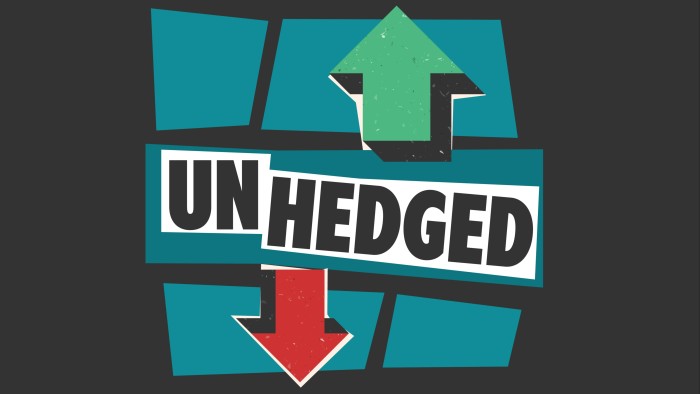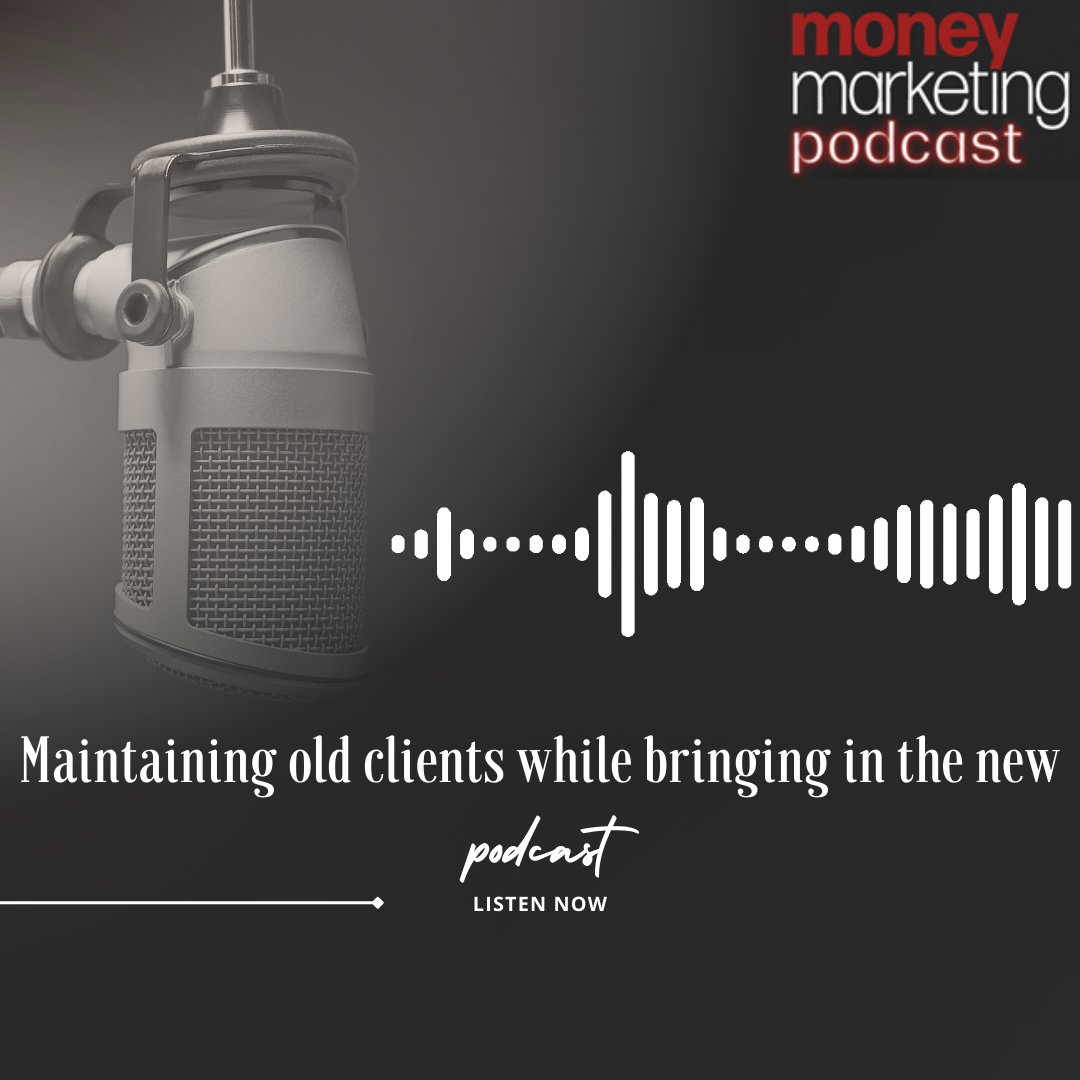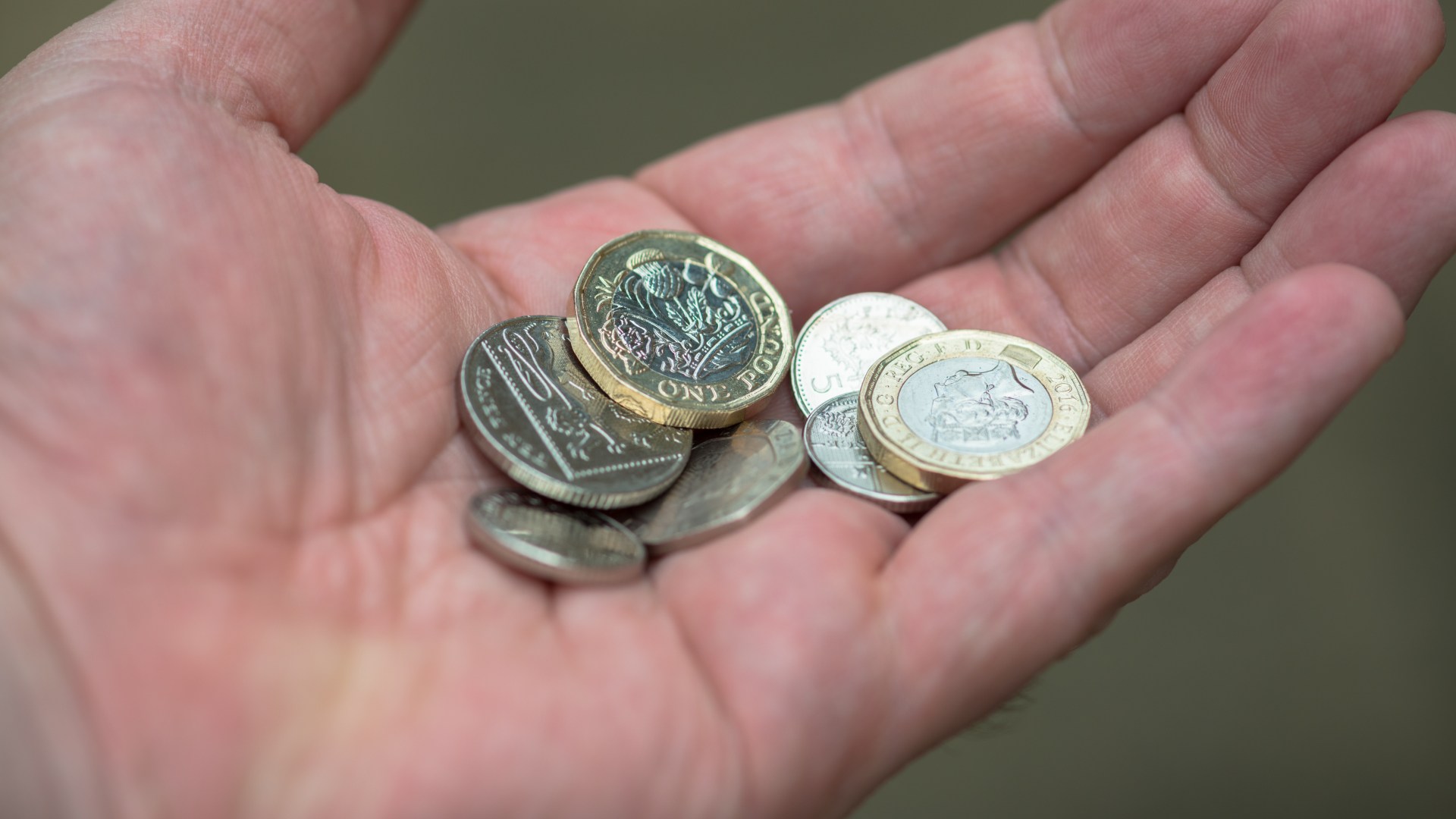Good morning. Earlier this week, disappointing earnings from ASML spooked chip investors. It looked like chipmakers were about to take a hit, but TSMC had great earnings yesterday, propelling a rally across the sector’s shares. Is this proof that the artificial intelligence narrative is real — or that the hype has long legs? Email us: robert.armstrong@ft.com and aiden.reiter@ft.com.
Friday Interview: Kevin Hassett
Having recently spoken with members of the Council of Economic Advisers in the Clinton and Obama administrations, we thought it best to round things out by speaking with Kevin Hassett, chair of the CEA during the Trump administration, currently a fellow at Stanford University. We spoke with him about the current cycle, tariffs, Federal Reserve independence, strong dollar policies, and AI.
Unhedged: Early this Fed cycle you said that the Fed was behind the curve. What do you make of their performance to date, especially the 50 basis point cut?
Hassett: We have to go back to the fiscal policy blowout at the beginning of the Biden administration, and recognise that the Fed, in a somewhat economically illiterate way, was disconnecting fiscal policy from inflation forecasting, and kept telling us the inflation spike was transitory. The Fed was really behind the curve in terms of helping to offset the fiscal policy shock that created or contributed massively to inflation. They really missed something that they shouldn’t have missed. It’s in every intro macro textbook that if you have a fiscal policy shock, it could be inflationary.
You could argue that maybe because of central bank independence, they were thinking if fiscal policy wants to do something, and if we then just offset it with harsher monetary policy, we’re being political. I don’t know what was going on in their minds when they decided to wait. But they let inflation get out of control.
I went to the Jackson Hole meeting a year and a half later, and everybody understood that there was a lot of catching up to do. And I think that if you go back and look at the hiking they did, that they were historically aggressive by some measures. Federal Reserve policy, like every other economic policy, is something that is going to have mistakes. They recognised they made a mistake and they responded aggressively to it. So I would give them a very low mark for starting late, and a much higher mark for learning from their mistake and being aggressive about it.
The latest move to start reducing rates is something that made a great deal of sense based on the data that they had at the time. We had just crossed or gotten right to the edge of the Sahm rule. But then, all of a sudden, the data kept surprising everybody on the upside. And so in retrospect, it looks like maybe an error, but I wouldn’t call it an error, because I think that based on the data in hand at the time, it did look like there was a sharp slowing going on. The mood-setting data for that meeting was the bad jobs data we got over the summer. In retrospect, the history books will call it a mistake, but I think that when you’re scoring economic policymakers, you need to understand what things are like at the moment that they’re making the decision. And for me, I wouldn’t give them a bad grade for the September move, although in retrospect, it looks like probably they wish they didn’t do it.
Unhedged: Do you think that the supply shock is part of the inflation story, too?
Hassett: You could go back and look at a piece that John Cochrane and I wrote in National Review, or an interview I did in that May [2021], where I said inflation is probably going to be about 7 per cent that year. This was ex ante stuff based on, in part, the fiscal theory of the price level. There’s maybe somebody who could come up with a model that allocates the blame, perhaps for political purposes, elsewhere. But I don’t think that it’s hard to think through the economics of what happened. The way I like to explain it to folks: let’s imagine an economy where we’ve got one apple tree and it produces 10 apples, and we charge $1 an apple. Nominal GDP is $10, and real GDP is $10. Then the government’s like, geez, people don’t have enough apples, and so the government decides they’re going to spend $20 on apples. But if you don’t get another apple tree, then nominal GDP is $20, and real GDP is still $10. And the difference is a change in the price of apples. And so the calculus that I was doing back when we saw the fiscal policy shock coming, was based on that kind of intuition: how much supply do we have?
If you have a model that says something different, I’ll be happy to evaluate it. But I think at some point in a political season when people are allocating blame, one needs to be wary of what the motivations of the authors are.
Unhedged: Was the US stimulus the explanation for the inflation that we saw in the UK, Brazil or Germany?
Hassett: The US had a bigger stimulus than other countries, and then what happened in the US? The US has a big effect on global prices. It’s a big account.
To give you some numbers: skipping the Covid year, the average deficit spending in the three Trump years of 2017, 2018, and 2019 was $809bn. And the Biden average, outside of the Covid space, in 2022, 2023, and 2024, is $1.6tn. Basically double. There’s just not a macro model that takes a shock like that and doesn’t give you inflation.
Unhedged: As recently as April, you said we might be heading towards something like stagflation. Do you still see that as a risk?
Hassett: I’ve been really surprised on the upside by the economic data over the last month or so. Looking at GDPNow, given how much the unemployment rate had gone up, it is almost a historically unprecedented sequence of data.
I have two things that I’m thinking about. Thing one is that it feels like the jobs data are way noisier than they used to be. It could be related to the way people respond to surveys. It could be related to the surge in undocumented people in the labour force, who maybe don’t want to answer questions. I don’t know.
On the other hand, my intuition for the growth in GDP is related to the great work that Erik Brynjolfsson, my colleague at Stanford, has been doing on the impact of AI on productivity. In the late 1990s, when all of a sudden the internet started to be a thing, we had a sequence of years where there were really high equity returns, and revenues and growth surprised on the upside a lot. The productivity measures had trouble catching up to what was going on then. It could be AI is starting to feed through to the data much more than anyone expected, or a combination.
Unhedged: What do you think the overall impact of record migration has been on the inflationary outlook?
Hassett: To give you a point estimate of the effect would require me going through the literature and deciding what I believe the most. But if you increase the supply of labour, then you should put downward pressure on wages. That’s kind of an obvious point. The latest wave has been larger, and it’d be interesting to see what the impact on employment is. So, as an example, suppose that you have a big influx of people who then get jobs in sort of low-wage, but undesirable places. Then the average wage could go down because there’s more people in the low-wage sector, but it wouldn’t affect the wages of people outside of that sector.
Unhedged: What do you think the inflationary impacts of across-the-board tariffs like Trump is proposing might be?
Hassett: Well, if you look at the Republican platform, the first listed trade policy is the Reciprocal Trade Act, which takes US tariffs to the levels that our trading partners charge us. So if we adopt a policy where the US says “whatever your tariff is on us, then we’re going to charge that to you”. Then that sets off a potential game theoretic response. Where they’re like: “Well, I don’t want you to raise your tariff to my level, so I’m going to give you some . . .” Or go to the bound. There’s the bound, and applied tariffs. I don’t know if you guys know about how to measure those, so I’ll just tell you the bound tariff rates.
For the US it is 3.4 per cent, the EU it’s 5 per cent. China is 10. Vietnam is about 12. Brazil is 31, India it’s 50. Japan is 4. UK is 5, Taiwan is 6 . . .
Unhedged: How do we read those bound numbers?
Hassett: Oh yeah, there’s something called a bound tariff, and something called an applied tariff. The bound rates are the maximum allowable under [World Trade Organization] rules, and the implied rates are what countries actually apply in practice. The applied is usually highly correlated with the bound, but they don’t go as high. So for example, Brazil’s applied is 11 and their bound is 31. So they can go to 31 under WTO rules without us being able to retaliate. So which one is relevant? Suppose that the US passes the Reciprocal Trade Act. And let’s just say that the Reciprocal Trade Act changes our bound tariff. Then Brazil is going to be debating: “Well, should I go to 3.4, or do I want the US to go to 31.” And so the question is, what’s Brazil going to do? My guess is they go to 3.4, but maybe they don’t, in which case we go higher.
Unhedged: Maybe we need to follow more carefully, but Trump is not talking about the Reciprocal Trade Act on the campaign trail.
Hassett: He’s mentioned the Reciprocal Trade Act a million times! But the point is, I’m going in two steps. The first step is the Reciprocal Trade Act, which is something that he’s supported ever since I first talked to him about trade. One of the things that he says is we’re being played for fools by these guys. They’re applying a high rate to us, and we apply a low rate to them. Then the question is, what to do? First of all, if you look at the applied rate of the US because of the China tariffs, and now I’m speaking from memory, but the applied rate went from about 3 to about 14 when we had the China tariffs, and we had 3 per cent growth pre-Covid and inflation below 2 per cent, even though the tariff went up by about 10 per cent. And why did that happen? The reason that it happened, that inflation did not take off, is that there were substitute trade partners that didn’t have the China tariffs, who had costs that were relatively close, and domestic production substituted as well.
And so your question is, if we apply a uniform tariff, then what happens to inflation? Well, what’s the next best supplier? What’s the cost ratio between them? And if we bring new stuff to the US, what’s the marginal effect of the marginal cost? So the thing that’s different if there’s a uniform tariff, is that the close substitute is less likely, probably because if it’s a labour-intensive product made in a low-wage country, then shipping it to the US would have an effect, potentially. But don’t forget that the tariff affects the price level when it goes in, not the long-run inflation rate. I mean, I guess in time-series models, there’s always ripple effects. But basically, it’s a level adjustment.
I’m not speaking as [a member of] president Trump’s campaign, but as a person who’s privy to the thinking in his circle, and then on the Hill — don’t forget that these policies require legislation, but I think you can pass them during reconciliation. As a market participant who’s forecasting economic policy in the US, paying close attention to the Reciprocal Trade Act is something that you should do.
Unhedged: We’ve heard a pretty wide range of views on the level of the dollar and its role in American competitiveness. Do you have a view on this topic?
Hassett: The strong dollar has been an important part of the global economy for a long time. And I think that obviously the market sets exchange rates too. And so if you want a strong dollar, you have to have policies that make it so that the market will decide the dollar should be strong. But I think the strong dollar policies are something we get seigniorage from, and so it’s something that we should endeavour to keep.
Unhedged: We’ve heard your name floated as a potential member of the Fed in the Trump administration. Just curious what you’ve made of comments by former president Trump and also the Biden administration about Fed independence?
Hassett: Well, I’m certainly not going to comment on any personnel matters. But in terms of central bank independence, the literature is clear that it’s a positive. We’ve certainly had experiences, like with Arthur Burns in the past, where there wasn’t much independence, and the co-ordination was harmful. I think one of the things that we need to pay attention to is that central bank independence is something that’s in law, but it’s also in the hearts and minds of the people at the central bank. And I think that there’s a reasonable case to be made that the central bank of the US hasn’t been as independent as it should be.
For example, right after president Trump won and before he was inaugurated, in that December, the Fed started hiking. Even though if you go back and look at what the data were then, it was not supportive of a hike. And then when there was a fiscal policy blowout with a complete Democratic government, the Fed didn’t do anything to offset it. How many times did you see Alan Greenspan go out and jawbone Congress of whatever party when they were getting ready to do something fiscally irresponsible? And so I think that central bank independence is important, and I think that it’s not just something that’s about the rules that you have, but it’s also about the spirit of the people there. And I am sure that president Trump supports central bank independence, but he also wants to have his voice heard, and he wants to have people there who are truly independent.
I want to tell you a funny story. President Trump wasn’t super happy about what Jay Powell was doing at the time, and there was a question about whether he could fire Jay Powell. I was sure that the Fed chair couldn’t be fired by the president as a matter of law. That’s what I got convinced of by the top legal authorities in the country. But anyway, there was a little discussion about, well, you really can’t fire Jay Powell. And so then we just sort of decided that that wasn’t going to be something that anyone would pursue.
In December 2018, somebody asked me in a gaggle outside the White House, whether the president was going to fire Jay Powell, and I said: “No, absolutely not.” And then the Dow went up like 1,000 points. The president called me up that evening and he said jokingly: “Hey, we should put you on TV every day.”
Unhedged: There have been plenty of periods in history where fiscal policy is pointing one way and monetary policies are pointing the other. The early years of Reagan’s jump to mind. Is that a sustainable relationship?
Hassett: I think that it’s important for fiscal policymakers to understand that if the Fed’s job is price stability, then the Fed will have to respond to fiscal policy. And that’s why Alan Greenspan was so careful to educate members of both parties about their responsibility to make his job not too difficult.
Unhedged: Markets have just been amazingly strong. And part of the market narrative has been AI. Do you feel like the market is reflecting economic reality on AI? Or are we maybe seeing something like fiscal policy showing up there too?
Hassett: AI is moving really, really fast. It’s like the introduction of the internet, but way faster in terms of how it’s going to modify the economy. And AI is expanding the set of possible future states of the world in a way that will be challenging for markets to digest at times. It will completely change Knightian uncertainty. Markets may overreact to such new uncertainties, so you could get bubble-like behaviour for a while, which is a risk.
It’s an interesting question, whether, in retrospect, we should have called the internet a bubble. If you bought the internet in 1996 then you’d still have made a fortune, even though three-quarters of the things that you bought became worthless. So I think that at a time of great uncertainty, there’s great opportunity.
One Good Watch
FT Unhedged podcast

Can’t get enough of Unhedged? Listen to our new podcast, for a 15-minute dive into the latest markets news and financial headlines, twice a week. Catch up on past editions of the newsletter here.
























































































































































You must be logged in to post a comment Login